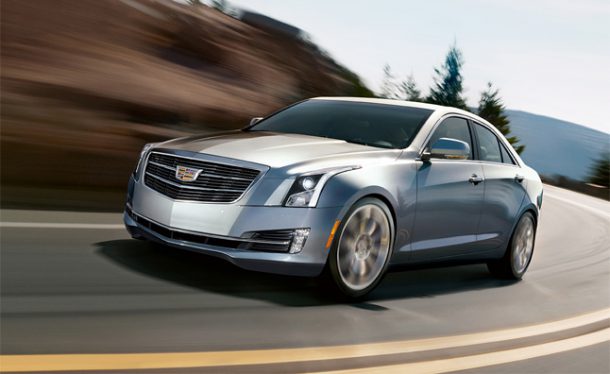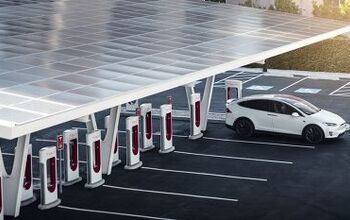Faster Four: GM Patents a Better Two-Stage Turbocharger

General Motors wants better performance from its boosted engines, so it headed to the patent office with a design for a new two-stage turbocharger — one that eliminates the drawbacks of the existing setup.
According to a document published by GM Inside News, the General filed the patent on May 19. The design (mated to a four-cylinder engine) isolates the low-pressure and high-pressure turbines, calling on one or the other (but not both) at different engine speeds and loads.
In a conventional two-stage setup, both turbines operate simultaneously at low to mid engine speeds, with only the low-pressure turbine working at high engine speeds. The two sides are never fully isolated, which compromises low-end performance.
Like a parent dealing with squabbling kids, GM decided to separate the two. In its design, the high-pressure turbo connects to the exhaust manifold via a high-pressure inlet duct, with the low-pressure unit connected to that channel via a low-pressure inlet duct. Depending on engine speed, an ECU-guided actuator located in the exhaust manifold opens opens the high-pressure inlet duct while closing off connecting channel, or vice versa.
The design aims to lower pumping losses while boosting the efficiency of both turbines. According to the patent, “maximum available enthalpy is given to the LP stage (low pressure turbine) in full power operation and to the HP stage (high pressure turbine) in maximum torque operation.”
Expect to see the turbo lag-reducing technology added to GM’s four-cylinder engines in the future, with the high-output 2.0-liter being a likely starting candidate.
[Image: General Motors]

More by Steph Willems
Latest Car Reviews
Read moreLatest Product Reviews
Read moreRecent Comments
- Probert They already have hybrids, but these won't ever be them as they are built on the modular E-GMP skateboard.
- Justin You guys still looking for that sportbak? I just saw one on the Facebook marketplace in Arizona
- 28-Cars-Later I cannot remember what happens now, but there are whiteblocks in this period which develop a "tick" like sound which indicates they are toast (maybe head gasket?). Ten or so years ago I looked at an '03 or '04 S60 (I forget why) and I brought my Volvo indy along to tell me if it was worth my time - it ticked and that's when I learned this. This XC90 is probably worth about $300 as it sits, not kidding, and it will cost you conservatively $2500 for an engine swap (all the ones I see on car-part.com have north of 130K miles starting at $1,100 and that's not including freight to a shop, shop labor, other internals to do such as timing belt while engine out etc).
- 28-Cars-Later Ford reported it lost $132,000 for each of its 10,000 electric vehicles sold in the first quarter of 2024, according to CNN. The sales were down 20 percent from the first quarter of 2023 and would “drag down earnings for the company overall.”The losses include “hundreds of millions being spent on research and development of the next generation of EVs for Ford. Those investments are years away from paying off.” [if they ever are recouped] Ford is the only major carmaker breaking out EV numbers by themselves. But other marques likely suffer similar losses. https://www.zerohedge.com/political/fords-120000-loss-vehicle-shows-california-ev-goals-are-impossible Given these facts, how did Tesla ever produce anything in volume let alone profit?
- AZFelix Let's forego all of this dilly-dallying with autonomous cars and cut right to the chase and the only real solution.



































Comments
Join the conversation
I for one do NOT welcome our new four cylinder overlords. (at least not in "performance" vehicles)
Seems like a similar setup to what Mazda is doing in the new CX-9 2.5T. Not being an engineer, not sure what the distinctions are.